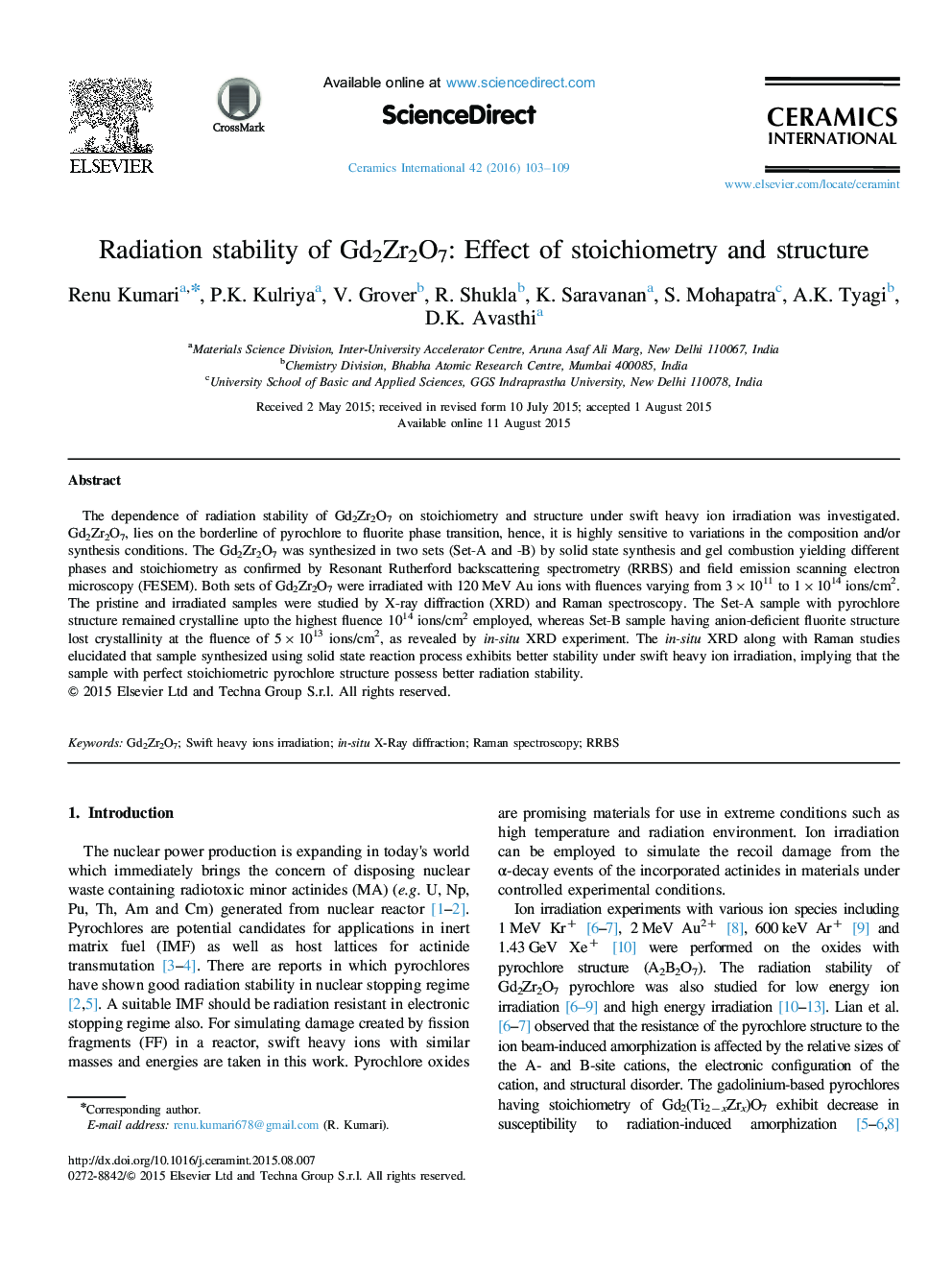| Article ID | Journal | Published Year | Pages | File Type |
|---|---|---|---|---|
| 1459409 | Ceramics International | 2016 | 7 Pages |
The dependence of radiation stability of Gd2Zr2O7 on stoichiometry and structure under swift heavy ion irradiation was investigated. Gd2Zr2O7, lies on the borderline of pyrochlore to fluorite phase transition, hence, it is highly sensitive to variations in the composition and/or synthesis conditions. The Gd2Zr2O7 was synthesized in two sets (Set-A and -B) by solid state synthesis and gel combustion yielding different phases and stoichiometry as confirmed by Resonant Rutherford backscattering spectrometry (RRBS) and field emission scanning electron microscopy (FESEM). Both sets of Gd2Zr2O7 were irradiated with 120 MeV Au ions with fluences varying from 3×1011 to 1×1014 ions/cm2. The pristine and irradiated samples were studied by X-ray diffraction (XRD) and Raman spectroscopy. The Set-A sample with pyrochlore structure remained crystalline upto the highest fluence 1014 ions/cm2 employed, whereas Set-B sample having anion-deficient fluorite structure lost crystallinity at the fluence of 5×1013 ions/cm2, as revealed by in-situ XRD experiment. The in-situ XRD along with Raman studies elucidated that sample synthesized using solid state reaction process exhibits better stability under swift heavy ion irradiation, implying that the sample with perfect stoichiometric pyrochlore structure possess better radiation stability.
